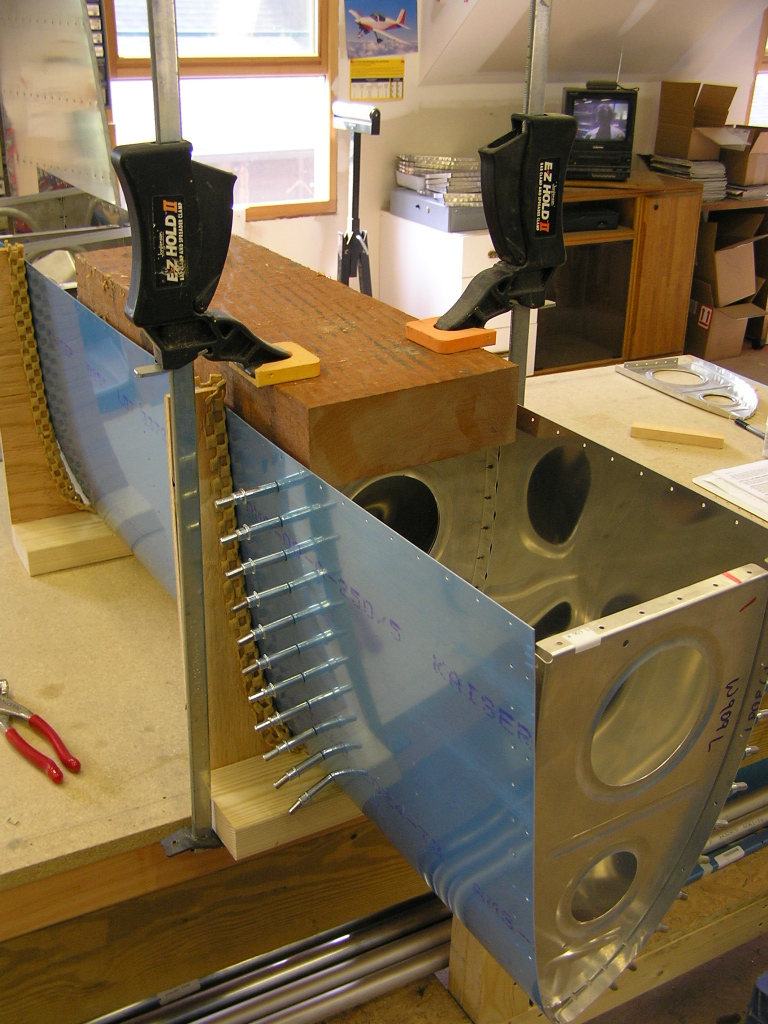the tanks were even harder!
Yeah, those tank ribs were a double bear to get in. Sheesh. I am a little upset at Van's for making ribs that need so much flutting. I was measuring like 1/2" of variance over the length of a rib. The end ribs are made of thicker metal, and they were pushing the limits of flutability.
But, those tasks are done! Of course, I am assume that when it is time to put it all back together for the final assembly that things won't be quite so hard, but I am sure it will still be a chore.
My final advice is:
1. Flute so as to get the holes to align as closely as possible. Well, MORE closely than you think is possible!
2. Use some lubricant (Boelube) on the ribs to help the metal slide better.
3. Start clecoing on the top, forward side and work your way back. Then, start on the bottom at the aft end, using your rivet punch-out tool to help bring the mating holes into rough alighment, and then start using clecos. At first, they won't close shut, but after you put in a few and as you push and prod the ribs, they will finally push the rib down into place and will clamp tight.
4. Be sure to keep the holes lined up straight. If the rib gets off center, it will be harder. Use a rubber mallet and small piece of wood to gently tap the rib into position to make the holes line up. Resist the temptation to beat the living daylights of the thing to make it fit!
5. Don't get impatient and use too much brute force! If things get really hard, break out the clamps as pictured in a previous post. But, if you do that, be careful that you don't bend the flanges of the rib, and that you don't dent the skins.






